Hardy Rubber Tree
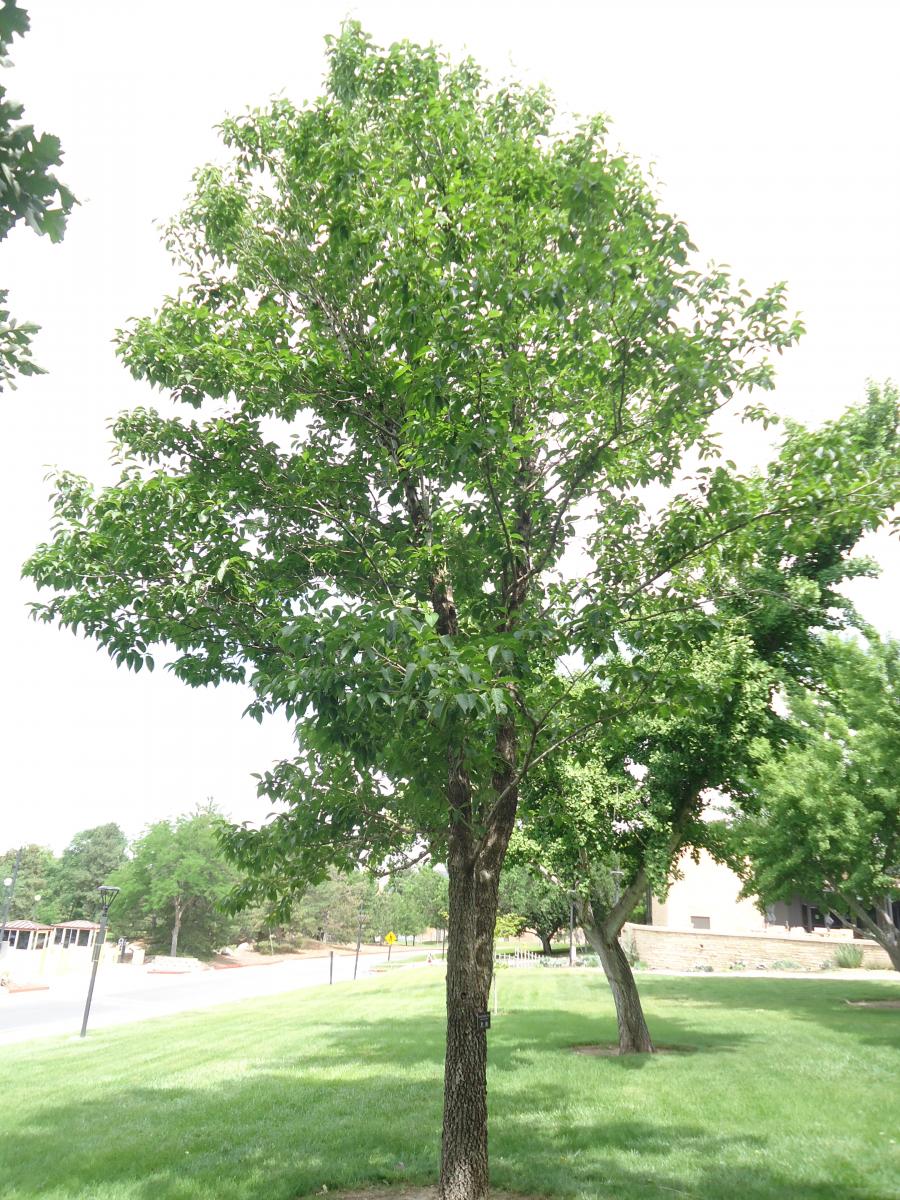

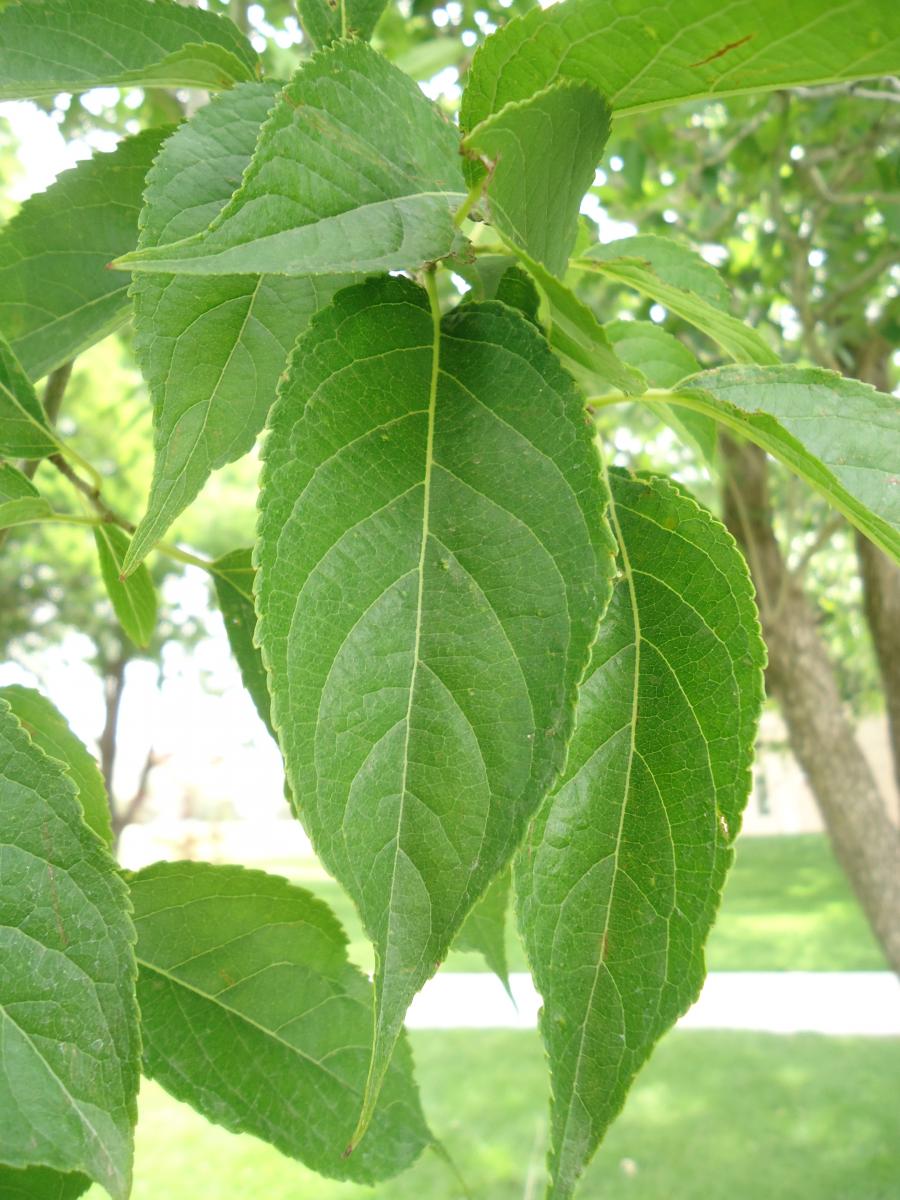
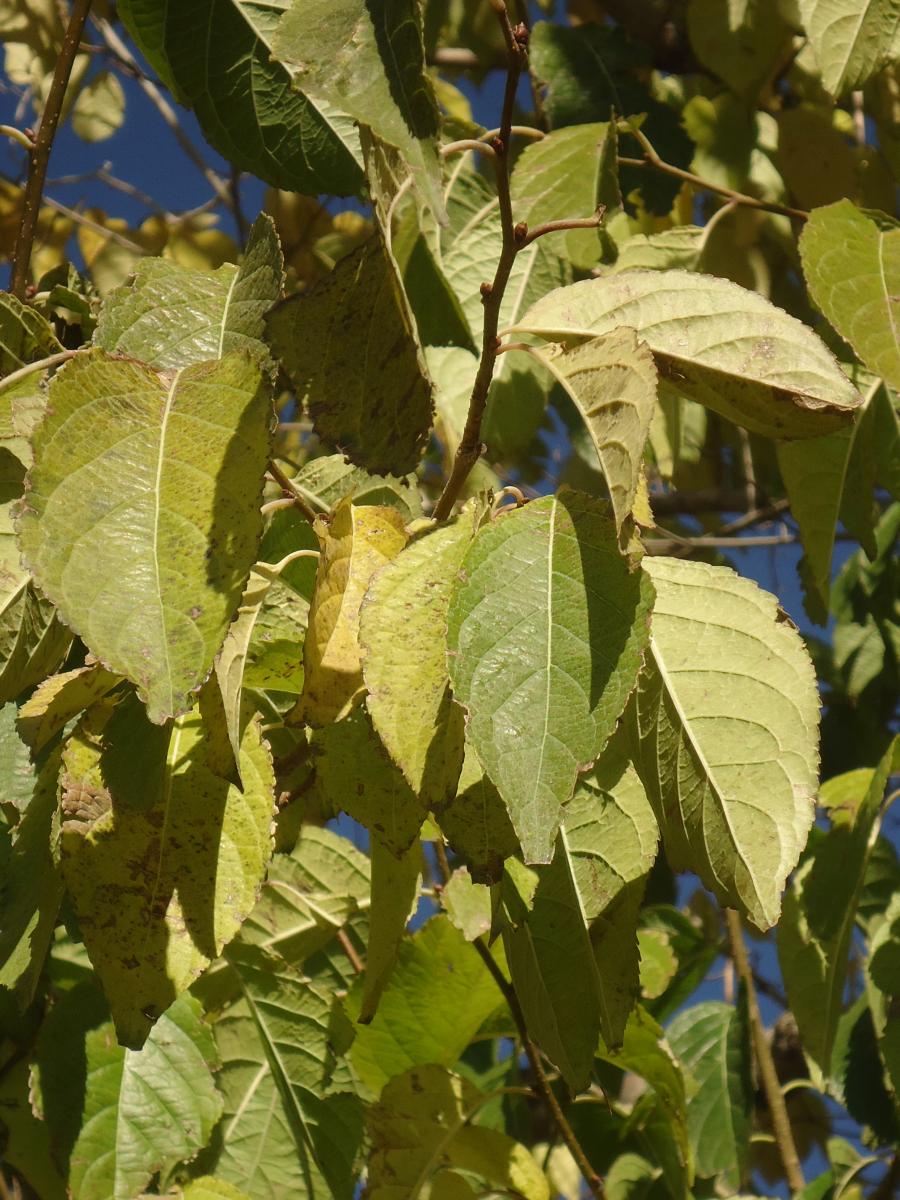
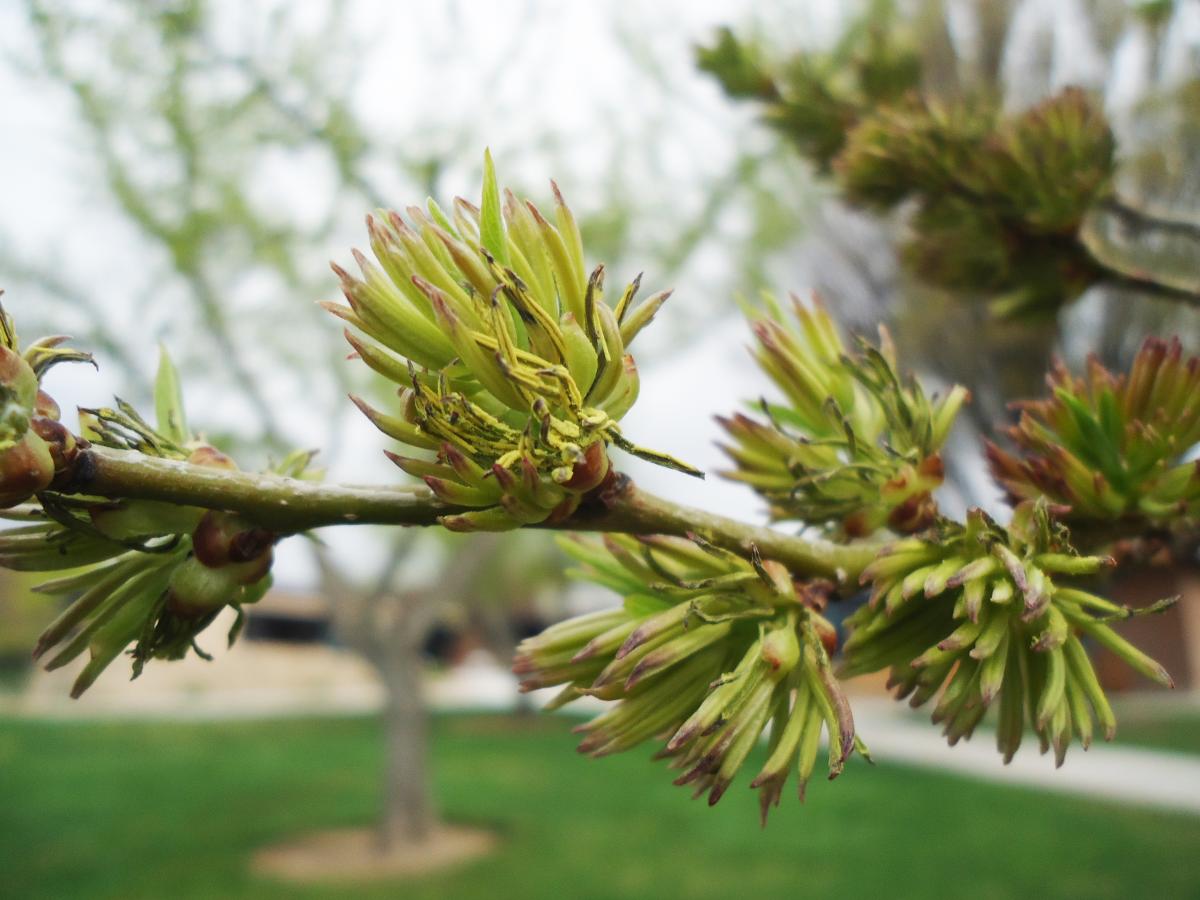
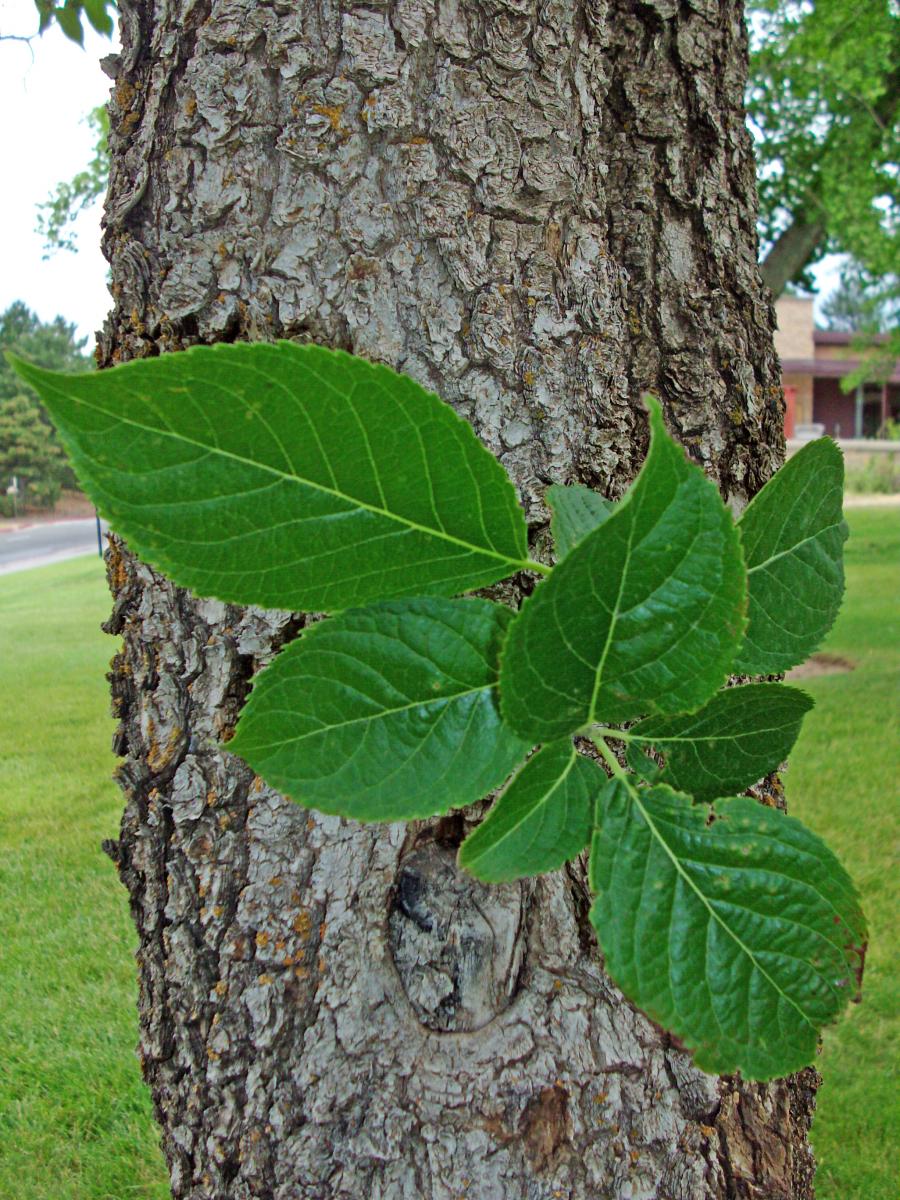
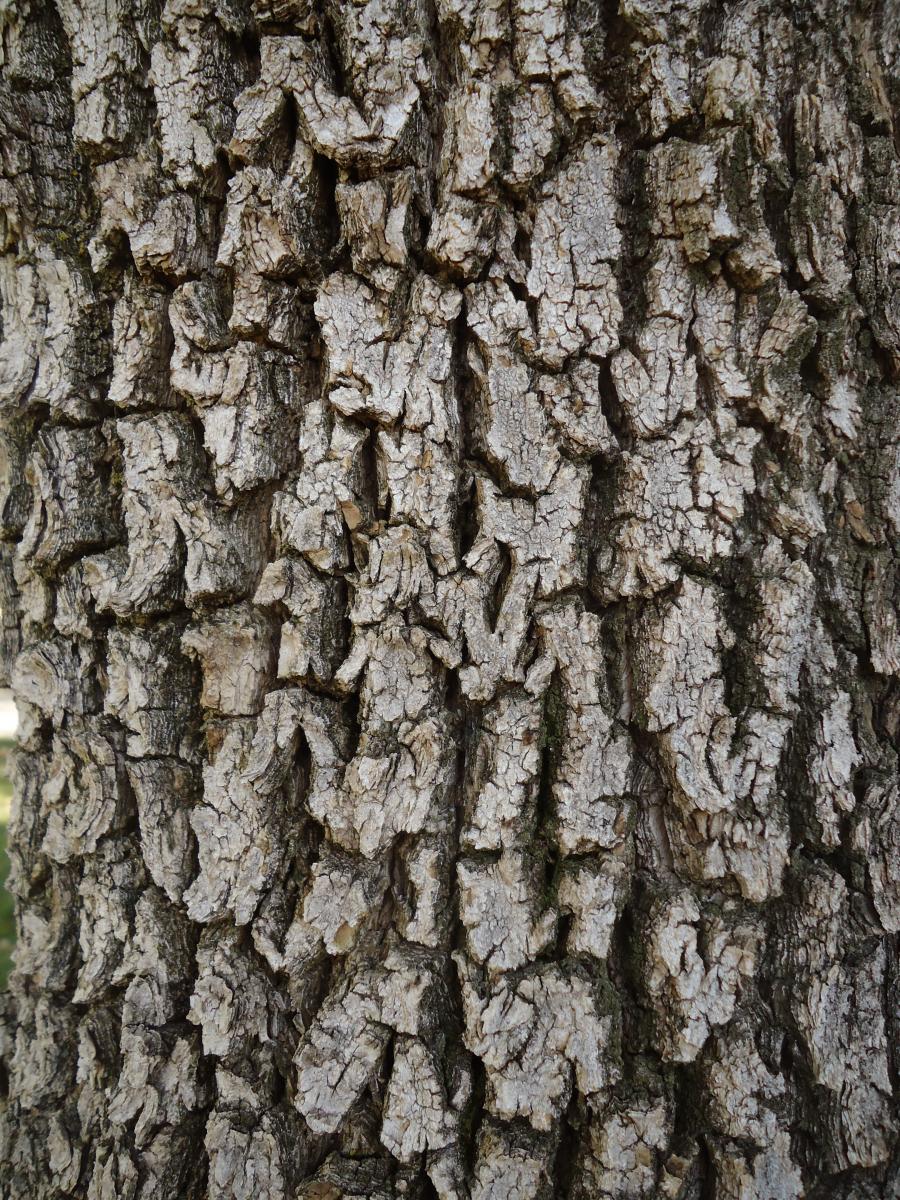
Eucommia ulmoides
Leaves: Deciduous. Leaves are 3 to 6 inches long, 1½ to 3 inches wide, glossy, lustrous dark green, rough texture, and virtually resistant to pests and disease. They have an elliptic, ovate to oblong, elm-like shape, with a serrated leaf edge and pointed tip. When torn or broken, the leaf and twigs exhibits a rubbery substance or stringy latex-like sap. No fall color.
Bark/Twigs: Ridged or furrowed, grey-brown bark and patchy with irregular sized scales.
Flowers/Fruit: Inconspicuous greenish-brown flowers during late spring (April). Dioecious - male flowers in clusters, and female flowers are solitary, on separate trees. Female flowers give way to brown, capsule-like, flattened ash or elm-like, 1½ inch winged seed with a notch.
Mature size and shape: Large. 40 to 55 feet high x 25 to 35 feet wide. Dense, symmetrical oval to rounded crown and low-branched silhouette. Rounded to broad-spreading tree. Somewhat pyramidal in youth.
General information/special features: Plant in full sun to part shade. Well-drained moist soil is best. Drought tolerant. Tolerates wide range of soil conditions except wet ones. As the name suggests, rubber can in fact be made from the tree sap, but the extraction process is complicated and too costly for commercial application. Good urban tree that tolerates air-pollution, poor drainage, compacted soil, and drought.
Landscape use and maintenance: Unique shade tree. Can be used as a street tree as long as there are no power lines. Slow growing rate. Average maintenance. Easily transplanted.
USDA Hardiness Zone: 4 to 7
Family/Origin: Eucommiaceae – Eucommia. Native to China. Only member of its genus and family. May no longer exist in nature.
Campus Use: Rare. Only specimen. Can be found southwest of the Sill Center (Bld 51).
